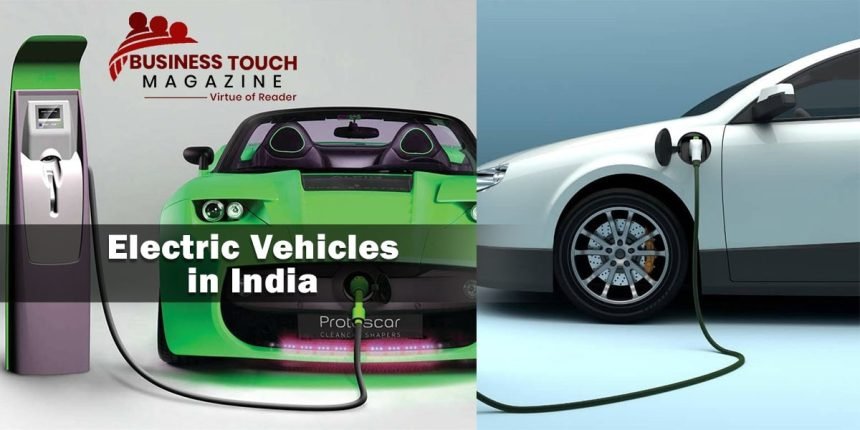Emerging economies have already signalled that they want to encourage the use of alternative fuel cars. As for India, Prime Minister Narendra Modi has set a goal of making the country 100% electrified by 2030.
E-vehicles gaining momentum in India
Tesla, the world’s leading EV manufacturer, has announced intentions to begin operations in India, indicating that electric cars are gaining acceptance in the country.
Electric scooters are already being produced by a number of firms in India.
The states of Uttar Pradesh, Madhya Pradesh, and Gujarat are leading the way in e-vehicle research and development in India.
In India, researchers are working to reduce the country’s dependency on lithium-ion batteries.
Why electric vehicles are a boon for India?
The debate on the grounds of whether e-vehicles are good or bad for India does not need many convincing factors.
Facts
• India has six of the world’s ten most polluted cities, according to the United Nations Environment Programme (UNEP). Fossil fuels are mostly to blame for the recent increase in pollution. Most of India’s vehicles, including two- and four-wheelers as well as railways in certain locations, operate on fossil fuels.
• Crude oil imports account for 86% of India’s energy needs, meaning that just 14% of the country’s energy demands are satisfied domestically. As a result, the Indian Forex Reserve is reduced as a result of these imports.
• Emissions of heat, the Paris Climate Accord, and the impact of sophisticated artificial technology on self-driving cars on global climate change are all discussed here. E-vehicles are unquestionably the next big thing in the world of transportation.
• E-vehicles are better for the environment for all of these reasons. Electric cars are already the norm in all of the world’s wealthy countries.
Major bottlenecks to adhere to
If we’re talking about electric automobiles, we need to know exactly where the power comes from. If we’re switching to electric cars but still relying on coal for our power, we’ll still be dealing with pollution.
Consequently, renewable energy-generated electricity should be used to power electric automobiles, and the same source of renewable electricity should be used to power electric vehicles.
Challenges for the transition to Electric Vehicles
If we aim to shift towards EV by 2030, as promised by the Modi government, the following challenges need to address.
Infrastructure for charging e-vehicles
If we aim to shift towards EV by 2030, as promised by the Modi government, the following challenges need to address.
Infrastructure for charging e-vehicles
Because his e-vehicle battery is running low, a person may have to go a long distance. There aren’t many places where he can replenish his energy.
Filling stations may be found in 70,000 locations throughout India’s 718 districts. A gas station is within easy reach about every 5-6 kilometres.
Only 300 EV charging stations are available, on the other hand. A person driving an electric car in such a situation will have a difficult time getting around.
The government is taking measures to address this issue, although at a fairly modest rate.
• Higher Cost
Take, for example, a Maruti Suzuki Swift as an example of a midsize automobile one may purchase in India.
There is a petrol version of the car that costs 6-7 lakhs. Tesla’s electric vehicle, on the other hand, begins at INR 60 lakhs in the Indian market.
E-vehicles would be more widely adopted in India only if they are reasonably priced.
• Lack of Technology
India is beset with a significant technological shortcoming. The gasoline tank capacity of a Maruti Suzuki Swift Petrol automobile is 40 litres.
With a 15 km/l fuel economy, the automobile can go up to 600 kilometres. Are there any technological differences in terms of how far a fully charged vehicle can go in comparison to a fully charged car?
There is a well-known electric vehicle (EV) manufacturer in India called Ather. According to the business, it can go 120 kilometres on a single charge on Indian highways.
• Import of EV components & materials
India must import the majority of the materials for electric vehicles due to a lack of available technologies. An electric vehicle’s battery is a critical component.
Lithium-Ion technology is now used in all batteries. Lithium reserves in India are, once again, a matter of debate.
It’s because of this that India is reliant on China for most of its battery and electric vehicle electrical components.
• Lack of a Skilled Workforce
Electric cars are a challenge in India because of a lack of competent workers.
As the world’s electric vehicle (EV) technology continues to evolve, many prominent educational institutions are struggling to keep up.
• Possible Disruption in the Automobile Sector
The largest challenge for the car industry is the potential for market dislocation.
The Indian automotive industry will be completely disrupted by the introduction of electric vehicles, which have lately entered the country and invested considerably.
There has to be a gradual shift toward electric cars so that current automakers can make the switch as well.




